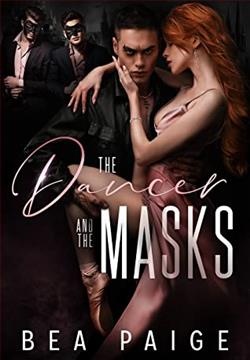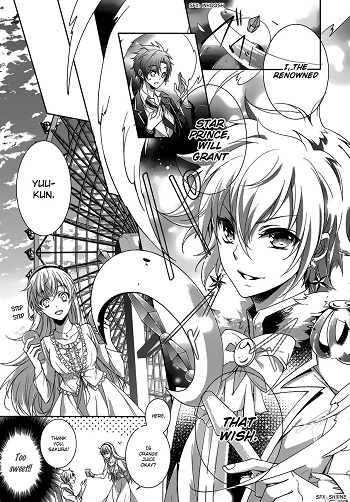The Dancer and the Masks (Their Obsession 1) by Bea Paige is a gripping tale that delves into the dark realms of obsession, captivity, and the struggle for autonomy. Set against the haunting backdrop of a Scottish castle, the novel explores the complexities of power dynamics through its two central characters: the Dancer and her captors, known as the Masks. This book is not merely a story of kidnapping; it is a profound exploration of the human psyche, revenge, and resilience.
The blurb sets the stage for a narrative steeped in tension and moral ambiguity. The Masks, heirs to a twisted legacy left by their father, "The Collector," are driven by a thirst for vengeance. They kidnap the Dancer as a means to settle a personal debt, thrusting her into a world where she is both a pawn and a potential catalyst for change. The duality of the characters is one of the book's strongest elements, as it invites readers to grapple with their motivations and the consequences of their actions.
From the outset, Bea Paige's writing is immersive, drawing readers into the chilling atmosphere of the castle. The descriptions are vivid, painting a picture of a place that is as much a character as the people inhabiting it. The castle's thick walls symbolize the emotional barriers the Masks have erected around themselves, while also serving as a prison for the Dancer. This setting is crucial, as it amplifies the sense of isolation and despair that permeates the narrative.
The character development in The Dancer and the Masks is particularly noteworthy. The Dancer, whose name remains undisclosed, is portrayed as a complex figure. Initially, she embodies the archetype of the victim, torn from her life and thrust into a nightmare. However, as the story unfolds, her resilience becomes apparent. She refuses to be broken by her captors, showcasing a strength that is both inspiring and relatable. Her internal struggle is palpable; she grapples with fear, anger, and a fierce desire to reclaim her autonomy. This evolution from victimhood to empowerment is a central theme that resonates throughout the book.
On the other hand, the Masks—whose identities are shrouded in mystery—are crafted with layers of complexity. They are not merely villains; they are products of their upbringing, shaped by a legacy of darkness and revenge. As the narrative progresses, glimpses into their past reveal the emotional scars that drive their actions. This nuanced portrayal challenges the reader to consider the nature of evil and the possibility of redemption. The interplay between the Dancer and the Masks creates a dynamic tension that keeps readers engaged, as they oscillate between sympathy and disdain for these characters.
The themes of obsession and power are intricately woven into the fabric of the story. The Masks' desire to possess the Dancer reflects a broader commentary on control and the lengths individuals will go to assert dominance over others. This theme is echoed in various literary works, such as Captive in the Dark by C.J. Roberts and The Dark Duet series, where the lines between love and obsession blur. However, Paige's approach is distinct in its emphasis on the Dancer's agency. While she is physically trapped, her spirit remains unyielded, challenging the notion that captivity equates to total submission.
Moreover, the psychological tension in the book is palpable. The Dancer's interactions with her captors are fraught with danger, yet they also serve as a catalyst for her growth. The psychological games played by the Masks create an atmosphere of suspense that keeps readers on the edge of their seats. As the Dancer navigates her precarious situation, she learns to manipulate her circumstances, turning the tables on her captors in unexpected ways. This element of strategy adds depth to the narrative, making it not just a story of survival but also one of cunning and intellect.
Bea Paige's prose is evocative and engaging, with a rhythm that propels the story forward. The dialogue is sharp and often laced with tension, reflecting the characters' emotional states and the stakes of their interactions. The pacing is well-executed, balancing moments of high tension with quieter, introspective scenes that allow for character development. This careful pacing ensures that readers remain invested in the outcome of the Dancer's plight.
In conclusion, The Dancer and the Masks is a compelling exploration of captivity, resilience, and the complexities of human relationships. Bea Paige has crafted a narrative that is both thrilling and thought-provoking, inviting readers to reflect on the nature of obsession and the fight for autonomy. The character arcs are rich and multifaceted, making it a standout in the genre of dark romance. For those who enjoy stories that challenge the boundaries of love and power, this book is a must-read.
As the first installment in the Their Obsession series, it leaves readers eager for more, wondering how the intricate web of relationships will evolve. With its blend of suspense, emotional depth, and moral complexity, The Dancer and the Masks is poised to captivate a wide audience, making it a noteworthy addition to contemporary dark romance literature.




![A Killer Paradox [Official]](/upload/pic/manga/a-killer-paradox--official-.jpg)


















Reviews 0
Post a Reviews: